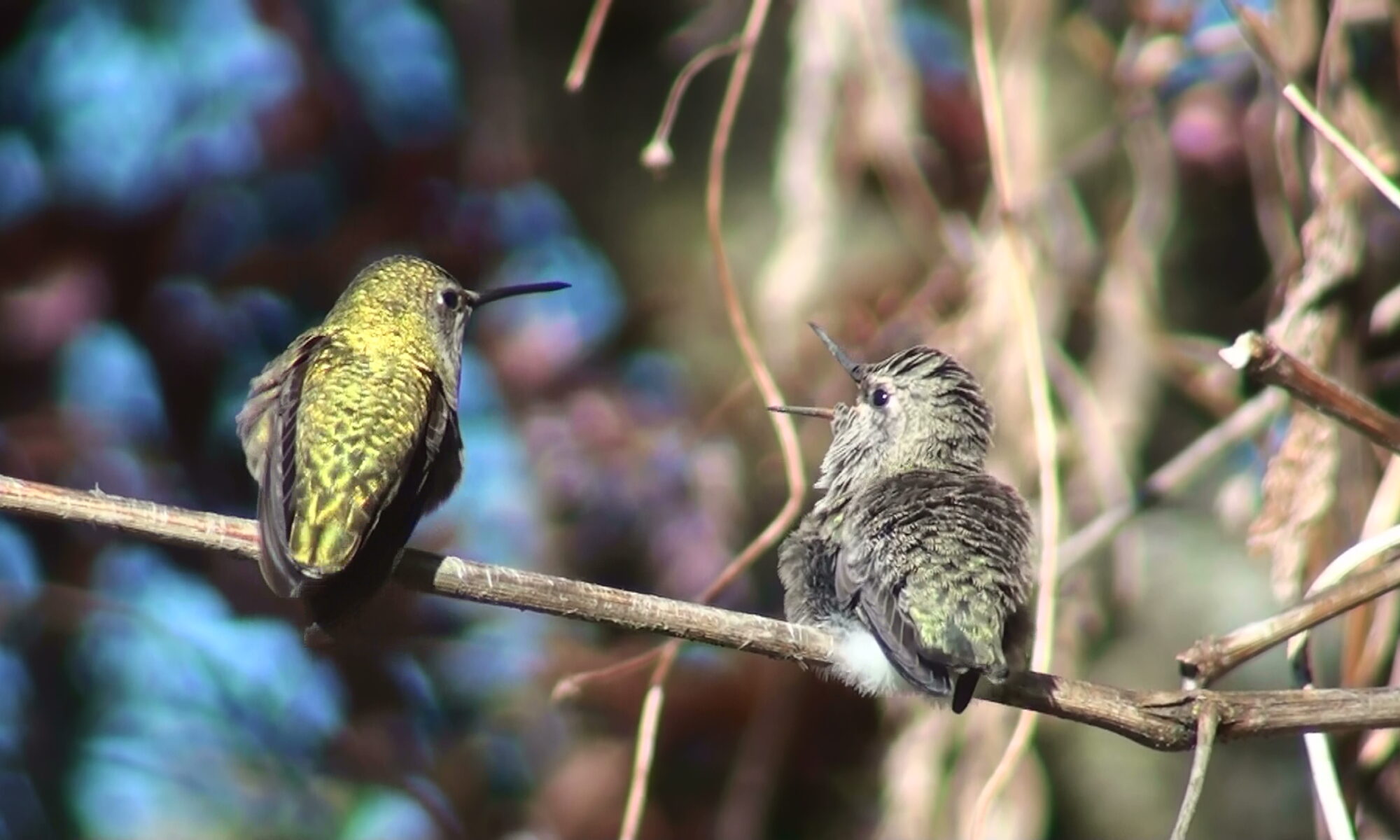Care and Feeding of Hummingbirds.
If you are going to set up a feeder you need to be prepared to treat it like your other pet’s food and water. A hummingbird coming to the feeder will come to rely upon it as a food source and the bird becomes somewhat dependant on you. The feeder needs to be cleaned and the sugar water changed every four to seven days. If you leave the sugar water much longer then that, it will develop a black mold which will make the bird sick. You make not be able to see it, but if you do see it, you can bet the bird has ingested a lot of it. The bird will be healthier, happier and more frequently at your feeder if the food is fresh. You wouldn’t leave your dog or cat’s food for a week without changing it, don’t do it to the bird either. It takes commitment to ensure a healthy hummingbird garden.
The best feeder to get is one which is easy to clean, fill and has a perch for the bird to sit while it feeds. I have tried several types including decorative types with glass flowers and after watching for a while, both Sweetie Bird and I prefer a simple flysaucer type with perch. I will post some photos of it soon.
One of the problems with the decorative types with glass flowers is that wasps will be able to access the sugar water and sometimes, mud-wasps will place their larva in the glass flower and plug it up with mud.
The recipe for the sugar water
The recipe for sugar water is four cups of water to one cup of sugar. You should boil the water to heat it up and dissolve the sugar into it. It also helps to keep solution from spoiling as quickly. Make sure the water is room temperature before you put it into the feeder. In the winter or cold weather, you can increase the sugar to one cup to three cups of water or slightly above so the birds get more energy from each feeding. It also helps keep the solution from freezing. If it is really cold, you can take the feeder in at night and put it out again in the morning. Hummingbirds don’t feed at night and in cold weather will go into a state of torpor to conserve energy.
About Sweetie Bird
Sweetie Bird is an Anna’s Hummingbird. Her nesting season is from December to August. During that time period she lays two eggs almost every six weeks. In fact, when one batch of chicks gets too large for her to sit on, she will make another nest and lay another two eggs and she sits on those while still feeding her near fledged chicks!
Laying the eggs
She lays two eggs, about a day and a half apart. This becomes obvious in the development of the chicks because one is always a bit ahead of the other, in hatching, feeding and even fledging. You get to realize just how vital a single day can be in the life of a hummingbird when you see how fast they develop.
The eggs
The eggs are about the size of coffee beans and have a soft papery shell. When the chick emerges, the shell collapses like a soft paper bag and becomes part of the nest floor. The chicks have no little point on their beak like other birds so they break through the eggshell by simply getting to big for it and splitting it like a sprout out of a seed.
Hatching
It takes about 28 days for the chicks to hatch and another 21 to develop enough to fly. Then they stay around the yard for a couple of weeks while Sweetie still feeds them and they gain enough strength and skills to fly off on their own.
Feeding
When they are hatched, Sweetie Bird feeds them about every 45 minutes. She catches flies and insects for their protein and some nectar or sugar water for hydration.
When they are first hatched, the soft wind from Sweetie Bird’s wings triggers them to raise their heads and open wide for a feeding as she lands on the nest. You can blow softly across the top of the nest and they will stick up their little heads in anticipation. Later, her clicking vocalizations becomes the primary trigger to alert them to a feeding.
She always feeds both of them.
Fledging
They don’t fly until they can peep and sit on a branch. They have to develop the grasping muscles in their feet so they can sit on a branch and they have to be able to peep so Sweetiebird can find them. When they do fledge, they will find a branch and sit on it for hours while Sweetiebird brings them food every 45 minutes or so. The feedings gradually get further apart and they start to get curious about other sources of food. They start by eating little bugs on the branch next to them and eventually they start getting attracted to flowers and going after the nectar. Sometimes they have a temper tantrum about trying to get food out of a plant and that’s funny to see. There will be an example of that on this site soon.
Flying
When you see a chick first start to fly, it’s obvious just how well the older ones are at it. The little chicks are like little fluff balls that jerk around the sky just trying to keep their heads upright. It really is like it is depicted in the Charlie Brown comic strip with Woodstock the bird bumbling around the sky. It takes them only a week or two though, and then they become masters of maneuverability.
